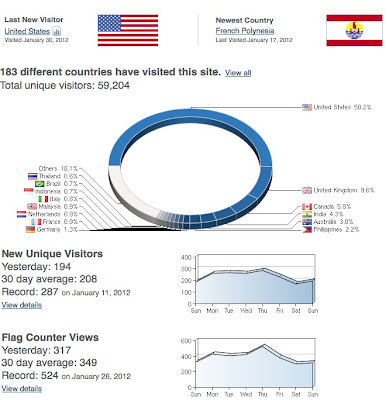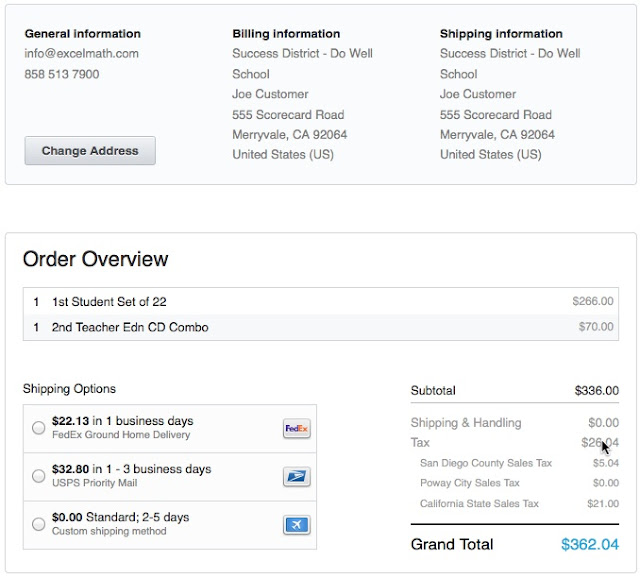Our blog is monitored by a variety of web user tracking services. They let me know if anyone is reading what I write. The services include FlagCounter, SiteMeter, StatCounter and Google Analytics.
Here are some sample summaries. You can click on the images to enlarge the display. The data tells you a little bit about a lot of people who come by for a short visit. You can see that in the long run, the numbers of visitors are going up.
Why don't the numbers all agree? Because that's the way numbers are. They just don't.
We have visits per day (whose day? starting when? ending when?), we have page views by"load", by "unique visitors" and by "returning visits". The counters started when I turned them on (or inserted some cryptic HTML code into the page). Since we didn't start them all at the same time, their counts can't be synchronized.
Reconciling inconsistent and incompatible results is the bane of the scientists and researchers. And it's one of the things that we teach kids in Excel Math. Double-check your work (using our CheckAnswer system) and do the problem in several different ways if it's important.
As they used to say on car ads,
Your mileage may vary.
Starting this week, the Excel Math blog will have a new author. I am retiring after 8 years and millions of math problems. In the past 30 months we've had 100,000+ page views, on about 600 blogs.
ExcelMathCarol is taking my place. Please be kind to her.
ExcelMathCarol is taking my place. Please be kind to her.
PS - I'll still be writing, at Curating Cazalea. Stop by and see me if you have time. Cheers.


















































